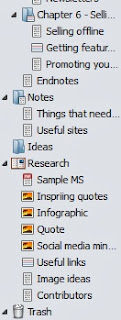Sorry it's been a while since I posted an update on the book. I've been frantically writing every spare minute I have so haven't had much chance to blog. I just spent the last few weeks writing 11,000 words on craft photography!
I will admit the writing is taking longer than I thought. I knew how long it takes me to write 1,000 words but hadn't realised how much research would be involved, and how time consuming that would be. Especially when it comes to things like international legislation!
I've also be focusing on building a really useful resource section at the end of every section of the book, that has taken a lot of time to compile but I think you will love it. It will allow you to get more in depth information or any of the aspects I've covered in the book, and to go straight to any of the resources I have mentioned.
Just this morning I hit the the halfway point on the book. 3 sections written and 3 left to go. :-)
Anyway in this post I thought I would share some info about the book writing software I am using. Is a program called Scrivener, which can be downloaded from
here. It was recommended to me by
Laura Strutt who wrote the Hayes Sewing Manual. It can be used on both Windows and the Mac. It is a paid for program which costs around £30, but if you Google you can often find discount codes, I got one
here. Also once you have paid for it you can download it onto all your computers. I use 3 different computers so I have it installed on all 3 and sync the book file through Dropbox.
 |
| Scrivener - Image (c) www.literatureandlatte.com |
It has so many great features it's hard to summarise them all here but among my favourites are the fact that you have have research folders with images, text and web pages saved in them and the cork board. The cork board is brilliant, you break your book down into section and subsections and each subsection is represented by a card on the cork board.
You add notes onto these cards to remind you what you plan to cover in those subsections, and best of all you can drag and drop them to move the sections of your book into a different order. as you can see below you can also add images onto the cards too. The cards are linked to any text you have written in that subsection (you can switch between text and pin board view) so when you move the card it moves the text around too. This makes it so much easier to both plan your book, and re-organise any of the contents.
 |
| Image (c) www.literatureandlatte.com |
You can also add meta tags to the cards on your board, mark the status (eg. first draft, final version) or indicate whether it is research, notes, an idea, a chapter etc. I have to say I love the cork board. It was a great way to send the whole plan for the book to my publishers, I sent them a screenshot of the cork board view of the entire book. It is also great for prompting you what you planned to cover in each section or subsection.
Scrivener also has spell checking tools, word count and formatting tools like Word does so you can format it however you want. Whenever you want you can export it out to Word (this is how I send it to my publishers). You can choose to export the whole book, or just a section at a time. So once I finish a section I export it to Word, and then forward it onto my publishers.

There's actually a 2 hour introductory tutorial you get when you buy Scrivener which is well worth doing, it teaches you all the amazing things you can do with this program. I only use a fraction of the full capabilities of the program. I can see that it will also be useful for planing our blog content and magazine articles as well as books.
It has a very easy sidebar navigation (shown to the right here) which lets you hop around the different sections of your book, and from research to text. There is also an option to work with a split screen so you can view your research whilst you type!
I'm finding it much easier to work in Scrivener than in Word, it was well worth the money.








